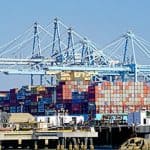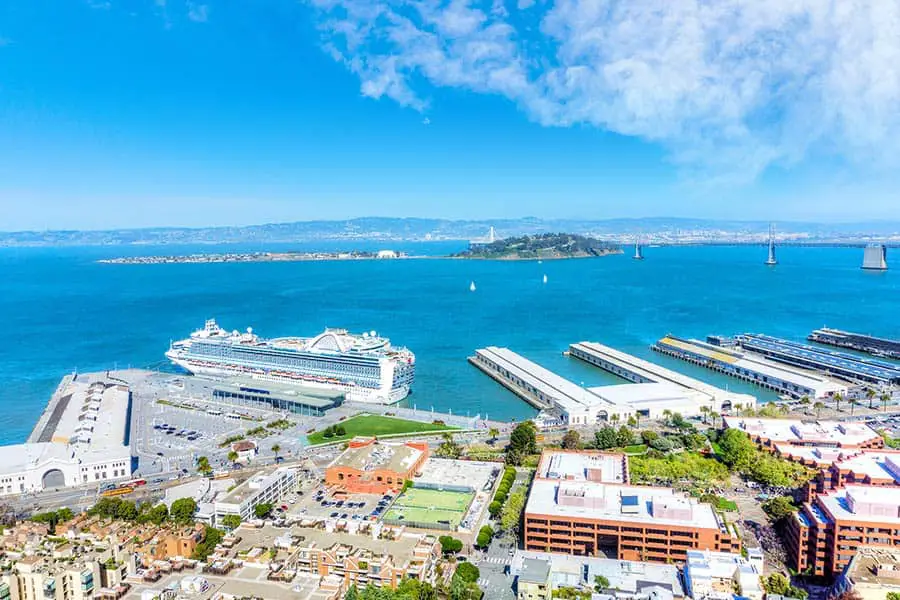
The San Francisco Bay Area comprises a region of nearly 6,900 square miles. Supplying goods to an area of this size requires a complex network of transportation hubs, including ships, air, rail, and trucks. When people think of Northern California, they immediately think of San Francisco. However, another area economic powerhouse is the City of Oakland. Both cities have a port, but which one is the major port city – Oakland or San Francisco?
The Port of Oakland is larger than the Port of San Francisco due to the limited amount of land available for expansion in San Francisco. This limitation allowed Oakland to become the primary shipping hub. Today, about 99 percent of all cargo to Northern California makes its way through Oakland.
The shipping industry has a long and complex history in California that changed rapidly due to large influxes of people during the mid-1800s. This growth allowed the City of Oakland to rise to power as the shipping center of the Bay Area. As you read on, you will learn more about the history of each port, their economic impact, and the role they play in the Bay Area today.
Oakland or San Francisco – Which One has the Bigger Port?
The most well-known city in the Bay Area is the City of San Francisco, and many people are surprised to learn that San Francisco does not have a major shipping port. Instead, Oakland is home to the shipping and transportation hub that handles the vast majority of all imports and exports through San Francisco Bay. However, it wasn’t always this way. A lot has changed through California history that has impacted each city’s role in the supply chain.
The Port of San Francisco is the oldest of the two ports. It was initially opened in 1849 and served as a place for both passenger and cargo ships to dock and easily access the City of San Francisco.
The port is located on the northwest point of the San Francisco peninsula and covers 7.5 miles of waterfront. However, as the city proliferated following the California Gold Rush, the town literally ran out of land to expand the port. Unable to keep up with demand, goods had to be sent to other nearby ports. This lack of land opened the door for the City of Oakland to expand its operations.
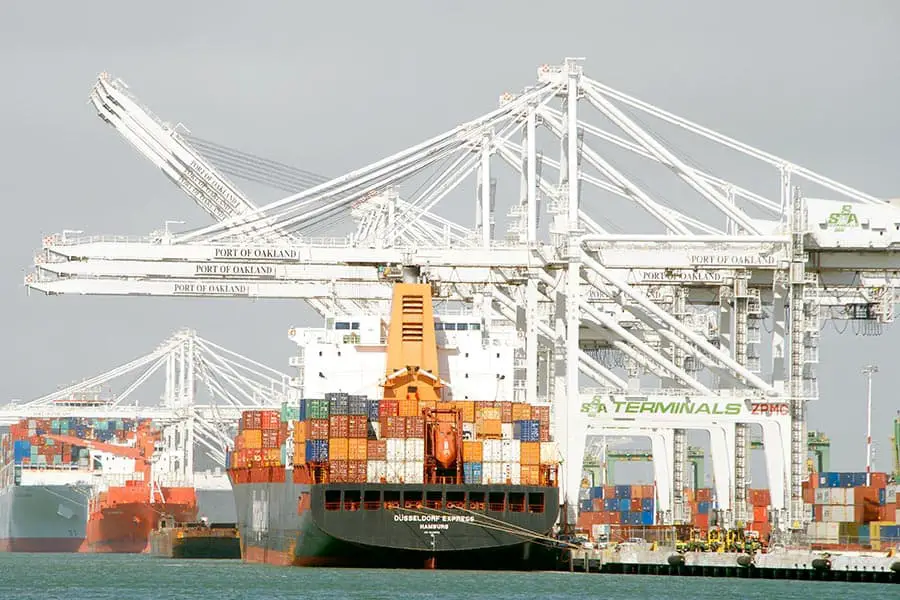
The Port of Oakland is a behemoth in comparison to the Port of San Francisco. Located across the bay, the Port of Oakland has 19 miles of waterfront which can be accessed through the estuary on the backside of Alameda Island.
The port was initially operated by the Southern Pacific Railroad in the late 1800s. During this time, the estuary was dredged to make it deep enough for large ships (the original estuary depth was only 2 feet at low tide). By 1927, the Port of Oakland, as we know it, was formed and is governed by a Board of Port Commissioners.
Today, the Port of Oakland processes 99 percent of all goods that pass through Northern California. Its 20 berths are capable of handling 2,000 ships carrying approximately 2.4 million large shipping containers. In addition, the port is directly responsible for employing 84,000 people across the region.
How Large is the Port of San Francisco?
While the Port of San Francisco has nearly 8 miles of waterfront, the port has minimal commercial shipping operations. Some of the piers have been converted into historic and retail spaces for tourist attractions. The port does handle a large number of passengers.
About 3 million people travel through the San Francisco Ferry Building every year. Pier 27 and Pier 35 also receive approximately 100 cruise ships each year carrying 400,000 passengers.
How Large is the Port of Oakland?
The Port of Oakland has 1,300 acres of maritime facilities, including three container terminals and two intermodal rail facilities (to transfer shipping containers directly onto freight trains). In addition to shipping operations, the Port of Oakland also controls the adjacent Oakland International Airport (OAK).
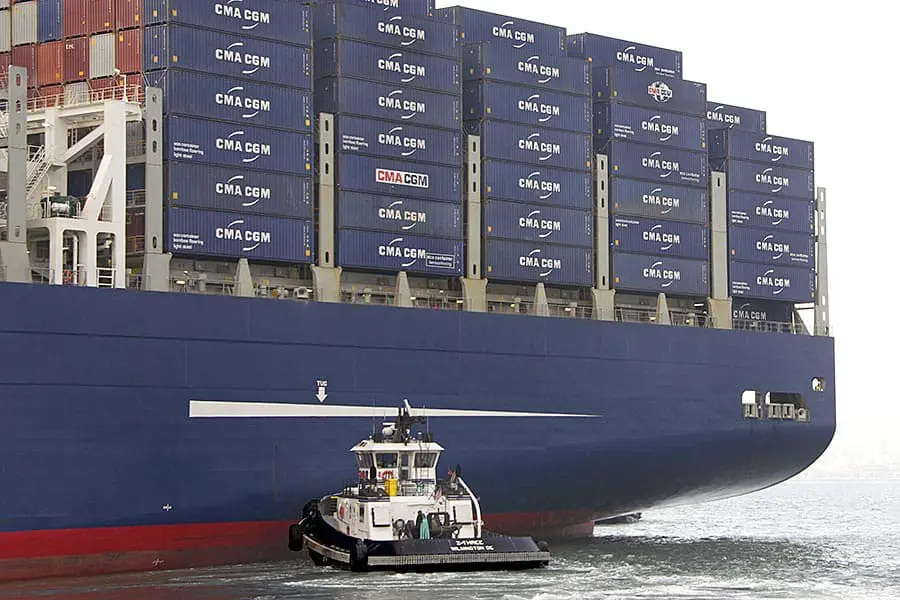
The port’s strategic location on San Francisco Bay and direct access to rail and air transportation allows goods to be easily transported across the country.
About 10 percent of Americans live within a 7-hour drive of the Port of Oakland. In addition, the rail lines that connect to the Port of Oakland also connect to half of the U.S. population.
Oakland Airport is a major hub for shipping giants FedEx and UPS, which not only transport millions of packages but employ about 2.6 million people across the region.
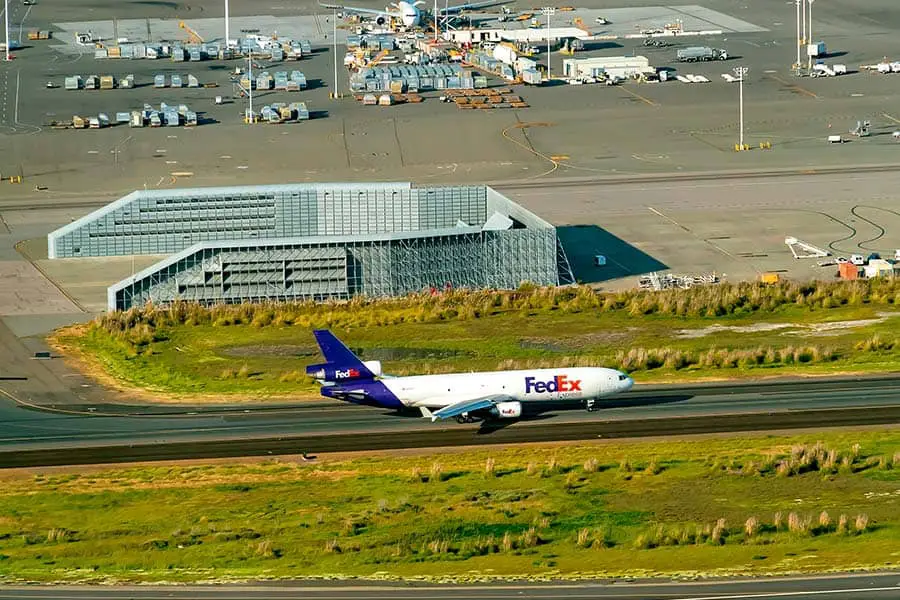
Is San Francisco a Major Port?
In the 1950s, a new type of maritime shipping began — containerized shipping. This type of shipping requires individual shipping containers to be loaded on massive cargo ships.
Because of the limited space, the Port of San Francisco was unable to expand operations or support the larger vessels. Because of this, the City of San Francisco is no longer considered a “port city.” As a result, compared to other ports, the Port of San Francisco doesn’t rank in the top 100 largest U.S. ports.
Other Posts of Interest
- Is Bodega Bay A Real Place?
- Where Do the San Francisco Giants Play (Plus Park Info)
- Are There Salmon In San Francisco Bay?
- Does Citrus Grow in the Bay Area? (Best Varieties to Plant)
What Goods Come Through the Port of San Francisco?
The small amount of goods that pass through the Port of San Francisco come from a handful of countries, with China, Japan, and Belgium being the top trade partners. The most significant imports include electric storage batteries, oil, and motor vehicle parts.
Conversely, the most common exports from San Francisco include passenger vehicles, gasoline, and other petroleum products.
Bay Area Answers Fun Fact: The famous sea lions at San Francisco’s Pier 39 haven’t always been there. They mysteriously appeared after the 1989 Loma Prieta earthquake and have remained ever since.
How Deep is the Port of San Francisco?
The Port of San Francisco is relatively shallow. At its deepest point, the port is 26 feet deep. This depth is deep enough for ferries and smaller ships but isn’t the depth that is required for larger container ships.
For comparison, the Port of Oakland is 50 feet deep. This depth is on par with most of the deepwater ports in the United States. The Port of Charleston has plans to become the deepest U.S. port in the next few years when dredging takes its depth to 52 feet.
Is Oakland a Container Port?
During the 1960s, the Port of Oakland became the first port on the West Coast of the United States to build terminals designed to accommodate container ships. This addition propelled the port to be the second-largest container port in the world at the time.
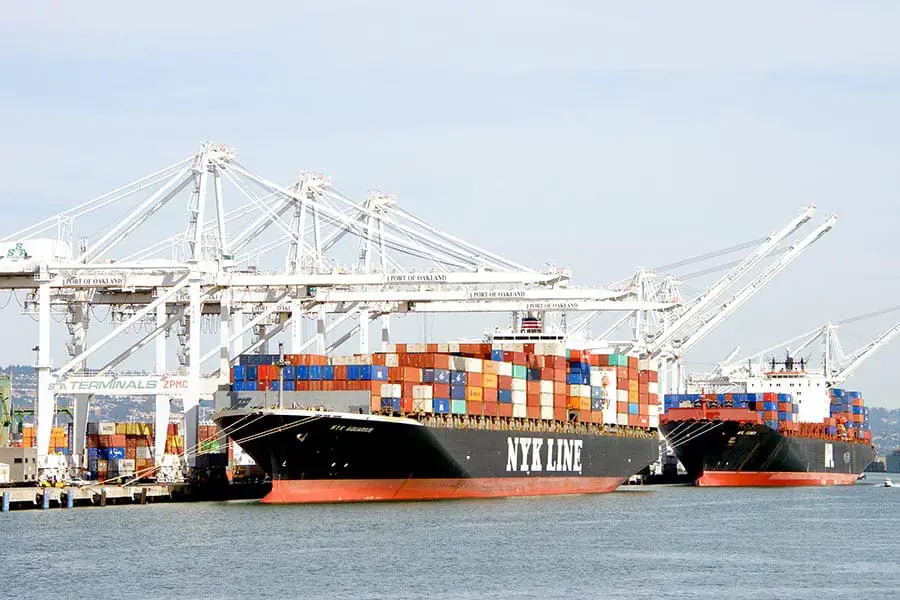
Today, Oakland remains a supply chain powerhouse. It is ranked among the 5th busiest container ports in the United States (after Los Angeles, Long Beach, Newark, and Savannah) and processes 99% of the containers that pass through Northern California.
Since shipping containers come in different sizes, they are measured in TEU. For example, a 40′ shipping container would be the equivalent of 2 TEUs. Each year, the port of Oakland handles approximately 2.4 million TEU (Twenty-foot Equivalent Units), both imported and exported containers.
What Goods Go Through the Port of Oakland?
The majority (76%) of the goods that pass through Oakland are from Asia. Fourteen percent come from Europe, and 3 percent come from Australia, New Zealand, and Oceania. Five percent of goods are domestic (most from the State of Hawaii).
Of the 2.4 million containers, the most common imports include 120,000 TEUs of household goods (furniture, bedding, lamps, etc.), 47,000 TEUs of beverages, 42,000 TEUs of glass and glassware, 40,000 TEUs of machinery, and 39,000 TEUs of electronics.
The most common exports include:
- Wood pulp for making furniture and paper products (145,000 TEUs).
- Fruits and nuts (80,000 TEUs).
- Meat and fish products (53,000 TEUs).
- Beverages and spirits (40,000 TEUs).
- Grains and seeds (32,000 TEUs).
How Much Money Does the Port of Oakland Generate?
Each year, the Port of Oakland generates over $500 million in operating revenue. However, this doesn’t tell the whole story.
The Port of Oakland brings many other economic and financial benefits to the City of Oakland, the San Francisco Bay Area, and additionally the State of California. In 2021, the port’s Executive Director, Danny Wan, stated that the Port of Oakland’s total economic impact is about $130 billion.
The Value of the Bay Area Community
Although San Francisco’s port is small and plays a minor role in the shipping industry of the Bay Area when compared to the Port of Oakland, it shouldn’t diminish the standing of San Francisco.
The Bay Area is powerful because of its diverse cities that each bring something to the table. San Francisco draws in millions of tourists and is the financial hub. Oakland provides significant global and domestic trade, Silicon Valley develops world-leading technology, and Wine Country produces award-winning wines.
Each city or region is deeply connected with one another. The role that each of these communities plays is what makes the Bay Area what it is today.


